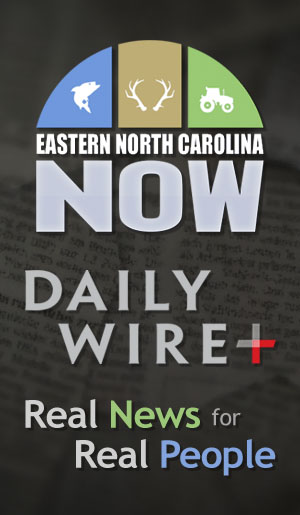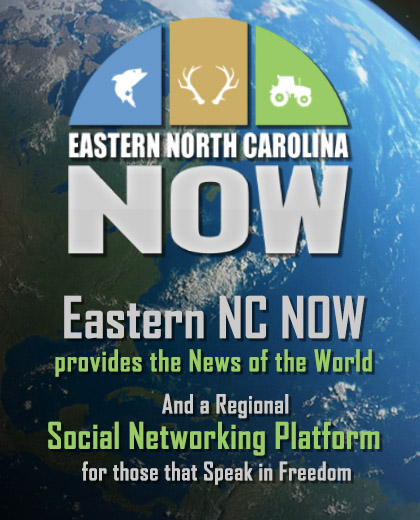In Difficult Times Good People gravitate towards Absolute Truth
Our Best Isn't Very Good
Publisher's note: This article appeared on John Hood's daily column in the Carolina Journal, which, because of Author / Publisher Hood, is linked to the John Locke Foundation.
 RALEIGH - When I go on the air or in front of audiences to discuss North Carolina's sluggish economy, one response I often hear is that the problem isn't really statewide. The state's major metropolitan areas are doing fine, I am assured, while it's the rural areas that are truly struggling to produce new jobs and economic opportunities.
RALEIGH - When I go on the air or in front of audiences to discuss North Carolina's sluggish economy, one response I often hear is that the problem isn't really statewide. The state's major metropolitan areas are doing fine, I am assured, while it's the rural areas that are truly struggling to produce new jobs and economic opportunities.
I wish that were the case. Although the urban-rural divide is challenging and not easily solved, at least it is a familiar problem. Urban areas have been growing faster than rural areas for a long, long time. Unfortunately, North Carolina's economic woes aren't limited to those of outmoded mill towns or depopulated farming communities.
Under the U.S. Census Bureau's latest re-jiggering of metropolitan area designations, North Carolina has 14 metros on the list. According to the latest unemployment rates from the Bureau of Labor Statistics, only three of those 14 metros - Asheville, Durham-Chapel Hill, and Raleigh-Cary - have jobless rates below the nationwide median of 7 percent for metro areas. The unemployment rates in Winston-Salem (7.7 percent), Jacksonville ( 8 percent), Burlington (8.2 percent), Charlotte-Gastonia-Rock Hill (8.3 percent), Wilmington (8.3 percent), Goldsboro (8.4 percent), Greensboro-High Point (8.6 percent), and Greenville (8.7 percent) are worse than the national median. "Worse" becomes "egregiously worse" in Hickory-Lenoir-Morganton (9.1 percent), Fayetteville (9.8 percent), and Rocky Mount (12 percent).
But even hipsters in Asheville and the Triangle should hold their braggadocio in check. When I looked more closely at Asheville's numbers, for example, they proved to be quirky. The metro's jobless rate (6.3 percent) has dropped by an improbable 2.1 percentage points since January, and by half a percentage point in just the most recent month. Virtually all the drop in unemployment was accounted for by people exiting the workforce. While not as pronounced, the trends in Durham-Chapel Hill (6.5 percent) and Raleigh-Cary (6.8 percent) were similar.
Even if some of the quirkiness dissipates in subsequent reports, however, these three metros would still have North Carolina's healthiest labor markets. That's not saying much, I'm afraid. We don't have any metros with unemployment rates below 6 percent. If you want to see stronger labor markets, you have to visit places such as Gainesville, Florida (5.4 percent), Green Bay, Wisconsin (5.6 percent), Fayetteville, Arkansas (5.4 percent), Austin, Texas (5.2 percent), Charlottesville, Virginia (4.9 percent), Des Moines, Iowa (4.7 percent), Oklahoma City (4.7 percent), Salt Lake City, Utah (4.5 percent), Rochester, Minnesota (4.1 percent), Lincoln, Nebraska (3.3 percent), Midland, Texas (3.2 percent), or Bismarck, North Dakota (2.4 percent) - although in the latter two cases, you're probably not visiting unless you are looking for work in the booming oil business or its ancillary service sectors.
North Carolina's economic challenge, in other words, is not simply to address lingering barriers to growth and opportunity in rural communities. Judging by rates of job creation and unemployment, none of our metro areas could be considered a national leader in economic recovery.
Of course, unemployment data are not the only way to evaluate the economic performance of a state or region. Many media organizations produced national ratings that use subjective surveys and quality-of-life measures. North Carolina sometimes fares well in these studies - but as I have often observed in the past, that doesn't mean our state is a national leader in economic growth. It just means that these studies are practically worthless as indicators of relative economic performance.
To assess the economic opportunities and living standards afforded to average households in different places, neither subjective guesswork nor raw data will cut it. You have to adjust income for variations in cost of living, particularly housing prices, the cost of purchasing energy and driving a car, the prices of groceries and other consumer products, and state and local taxes and fees.
MoneyRates.com has performed this calculation now for several years as part of a "best places to make a living" study. Here's the top-10 list for 2013: Washington, Virginia, Colorado, Texas, Wyoming, Minnesota, Nebraska, Utah, Kansas, and Oklahoma.
North Carolina came in at 38th.
Go Back

John Hood, president of the John Locke Foundation.
I wish that were the case. Although the urban-rural divide is challenging and not easily solved, at least it is a familiar problem. Urban areas have been growing faster than rural areas for a long, long time. Unfortunately, North Carolina's economic woes aren't limited to those of outmoded mill towns or depopulated farming communities.
Under the U.S. Census Bureau's latest re-jiggering of metropolitan area designations, North Carolina has 14 metros on the list. According to the latest unemployment rates from the Bureau of Labor Statistics, only three of those 14 metros - Asheville, Durham-Chapel Hill, and Raleigh-Cary - have jobless rates below the nationwide median of 7 percent for metro areas. The unemployment rates in Winston-Salem (7.7 percent), Jacksonville ( 8 percent), Burlington (8.2 percent), Charlotte-Gastonia-Rock Hill (8.3 percent), Wilmington (8.3 percent), Goldsboro (8.4 percent), Greensboro-High Point (8.6 percent), and Greenville (8.7 percent) are worse than the national median. "Worse" becomes "egregiously worse" in Hickory-Lenoir-Morganton (9.1 percent), Fayetteville (9.8 percent), and Rocky Mount (12 percent).
But even hipsters in Asheville and the Triangle should hold their braggadocio in check. When I looked more closely at Asheville's numbers, for example, they proved to be quirky. The metro's jobless rate (6.3 percent) has dropped by an improbable 2.1 percentage points since January, and by half a percentage point in just the most recent month. Virtually all the drop in unemployment was accounted for by people exiting the workforce. While not as pronounced, the trends in Durham-Chapel Hill (6.5 percent) and Raleigh-Cary (6.8 percent) were similar.
Even if some of the quirkiness dissipates in subsequent reports, however, these three metros would still have North Carolina's healthiest labor markets. That's not saying much, I'm afraid. We don't have any metros with unemployment rates below 6 percent. If you want to see stronger labor markets, you have to visit places such as Gainesville, Florida (5.4 percent), Green Bay, Wisconsin (5.6 percent), Fayetteville, Arkansas (5.4 percent), Austin, Texas (5.2 percent), Charlottesville, Virginia (4.9 percent), Des Moines, Iowa (4.7 percent), Oklahoma City (4.7 percent), Salt Lake City, Utah (4.5 percent), Rochester, Minnesota (4.1 percent), Lincoln, Nebraska (3.3 percent), Midland, Texas (3.2 percent), or Bismarck, North Dakota (2.4 percent) - although in the latter two cases, you're probably not visiting unless you are looking for work in the booming oil business or its ancillary service sectors.
North Carolina's economic challenge, in other words, is not simply to address lingering barriers to growth and opportunity in rural communities. Judging by rates of job creation and unemployment, none of our metro areas could be considered a national leader in economic recovery.
Of course, unemployment data are not the only way to evaluate the economic performance of a state or region. Many media organizations produced national ratings that use subjective surveys and quality-of-life measures. North Carolina sometimes fares well in these studies - but as I have often observed in the past, that doesn't mean our state is a national leader in economic growth. It just means that these studies are practically worthless as indicators of relative economic performance.
To assess the economic opportunities and living standards afforded to average households in different places, neither subjective guesswork nor raw data will cut it. You have to adjust income for variations in cost of living, particularly housing prices, the cost of purchasing energy and driving a car, the prices of groceries and other consumer products, and state and local taxes and fees.
MoneyRates.com has performed this calculation now for several years as part of a "best places to make a living" study. Here's the top-10 list for 2013: Washington, Virginia, Colorado, Texas, Wyoming, Minnesota, Nebraska, Utah, Kansas, and Oklahoma.
North Carolina came in at 38th.
| The Wrong Incentives | John Locke Foundation Guest Editorial, Editorials, Op-Ed & Politics | No Chance to Win? Change parties, bash your old one. |
Latest Op-Ed & Politics
|
Governor expected to sign into law
Published: Friday, April 26th, 2024 @ 1:48 pm
By: John Steed
|
|
Atheist Soros, although born Jewish, was Nazi collaborator in Hungary in WWII
Published: Friday, April 26th, 2024 @ 11:58 am
By: John Steed
|
|
anti-immigration conservative nationalist beats Social Democrat incumbent 2 to 1
Published: Friday, April 26th, 2024 @ 9:19 am
By: John Steed
|
|
protecting children and parents from gender ideology promoters
Published: Friday, April 26th, 2024 @ 6:45 am
By: John Steed
|
|
Biden wants to push this in public schools and Gov. deSantis says NO
Published: Thursday, April 25th, 2024 @ 9:19 pm
By: John Steed
|
|
eve 45% of Latinos support mass deportation
Published: Thursday, April 25th, 2024 @ 12:40 pm
By: John Steed
|
|
this at the time that pro-Hamas radicals are rioting around the country
Published: Thursday, April 25th, 2024 @ 8:01 am
By: John Steed
|
|
Pro death roundtable
Published: Wednesday, April 24th, 2024 @ 12:39 pm
By: Countrygirl1411
|
|
populist / nationalist anti-immigration AfD most popular party among young voters, CDU second
Published: Wednesday, April 24th, 2024 @ 11:25 am
By: John Steed
|
|
political scheme behhind raid on Mar-a-Lago
Published: Wednesday, April 24th, 2024 @ 9:16 am
By: John Steed
|
|
how many of these will come to North Carolina?
Published: Tuesday, April 23rd, 2024 @ 1:32 pm
By: John Steed
|
|
Barr had previously said he would jump off a bridge before supporting Trump
Published: Tuesday, April 23rd, 2024 @ 11:37 am
By: John Steed
|
























